Press release
Unaddressed symptoms of AFib in half of Women

Press release
Unaddressed symptoms of AFib in half of Women
July 26, 2023 / OMRON Healthcare, Co., Ltd. (Head Office: Muko, Kyoto, President & CEO: Ayumu Okada) conducted an awareness survey on atrial fibrillation (AFib), a major risk factor for cerebral infarction, among 1,000 women aged 20s to 60s.
Nearly Half of Women Experience Palpitations or Shortness of Breath but Leave Symptoms Unaddressed
Survey on Atrial Fibrillation Conducted Among 1,000 Women Aged 20s–60s
The results showed that more than half (52.7%) left their symptoms unaddressed despite experiencing palpitations, shortness of breath, and other symptoms potentially associated with AFib. The most common reason given across all age groups for not seeking medical care was that they did not feel their symptoms were serious enough to warrant a hospital visit (70.8%). The second most common reason differed by age: among women aged 23–44 it was “because I don’t have the time or it’s a hassle” (19.9%), while among those aged 45–66 it was “because I thought it was menopause” (24.0%).
Based on these findings, we asked Dr. Keitaro Senoo of the Department of Cardiac Arrhythmia Research and Innovation at Kyoto Prefectural University of Medicine to comment on the importance of taking action when symptoms are noticed.
Expert Insights
Comment from Dr. Keitaro Senoo of Kyoto Prefectural University of Medicine
In women, atrial fibrillation (AFib) may already be chronic by the time it is diagnosed. One reason is that women often have fewer opportunities to undergo health checkups compared to men, making it more difficult to detect the condition at an early stage. In addition, as menopausal symptoms such as hot flashes begin to appear, it is easy to attribute palpitations or shortness of breath to menopause and overlook the possibility of AFib. For this reason, it is important to make a habit of checking your pulse by placing a finger on your wrist and paying attention to its frequency and rhythm. If you notice symptoms such as shortness of breath or palpitations, or if your pulse feels irregular, this may help you decide whether to consult a physician. However, experiencing these symptoms does not necessarily indicate AFib, as premature contractions can also occur under stress. Understanding the relationship between stress and symptoms is therefore useful.
OMRON's efforts to raise awerness
To enable early detection of AFib, it is essential not to ignore the symptoms described above, but to monitor your pulse regularly and seek medical advice when necessary. AFib is a type of arrhythmia and a known risk factor for cardiogenic cerebral infarction. Studies indicate that approximately 40% of cases are asymptomatic,1 and even when symptoms are present, they often subside with rest, making early detection challenging. Daily awareness is key to early detection. This includes regular health checkups, using home ECG devices, and seeking medical advice as soon as symptoms occur
The Company has set a vision for its cardiovascular business of achieving zero incidence of cerebrovascular and cardiovascular diseases (Going for ZERO) and is actively working toward this goal. In addition, through the OMRON Style Beauty project, which supports women’s health, the Company provides health information tailored to each stage of women’s lives. Based on the results of this survey, the Company will further strengthen its initiatives to raise awareness of disease risks that increase with menopause, with the aim of realizing ZERO incidence of diseases for as many women as possible.
Summary of the Survey
1.
More than 80% of women aged 20s to 60s reported experiencing palpitations or shortness of breath in their daily lives. Among them, over 60% felt anxious about these symptoms.
2.
Approximately one in two women did not take any action despite experiencing such symptoms.
3.
The most common reason for not taking action, across all age groups, was that they did not consider the symptoms serious enough to warrant a hospital visit. The second most common reason among women aged 23–44 was lack of time or feeling it was a hassle, while for women aged 45–66 it was the belief that the symptoms were due to menopause.
4.
About 50% of respondents were aware of AFib. Of these, approximately 60% had only heard of it but did not understand what it meant.
5.
Even among those who were aware of AFib, fewer than 40% knew that it can be treated effectively if detected early.
Survey Results Details
1. Over 80% of Women Experience Palpitations or Shortness of Breath
A total of 84.6% of respondents reported experiencing early symptoms of AFib, such as palpitations and shortness of breath, in their daily lives. 65.8% said they felt anxious when experiencing these symptoms. By age group, the proportion of respondents who felt anxious increased with age, with more than 70% of women aged 45 and older reporting feelings of anxiety.

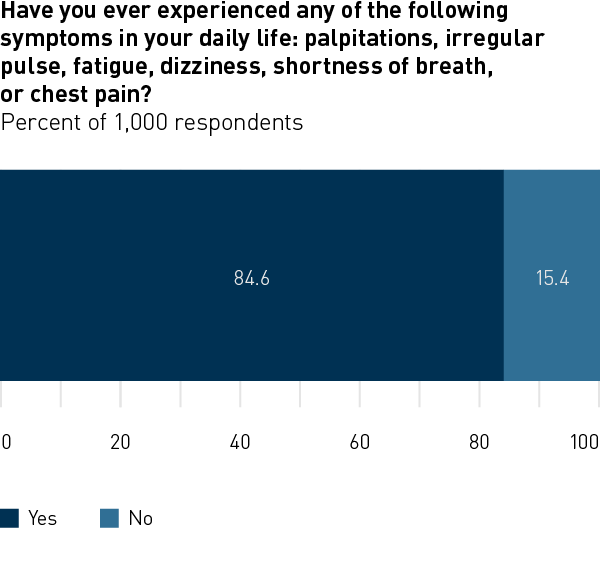
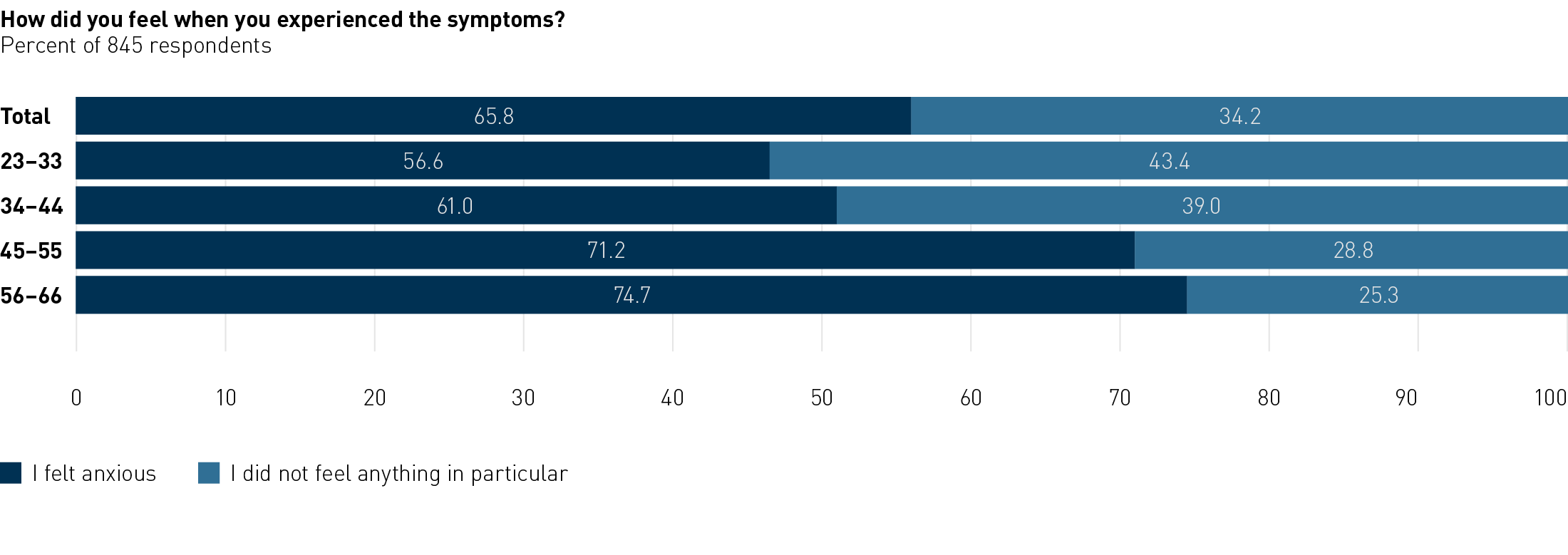
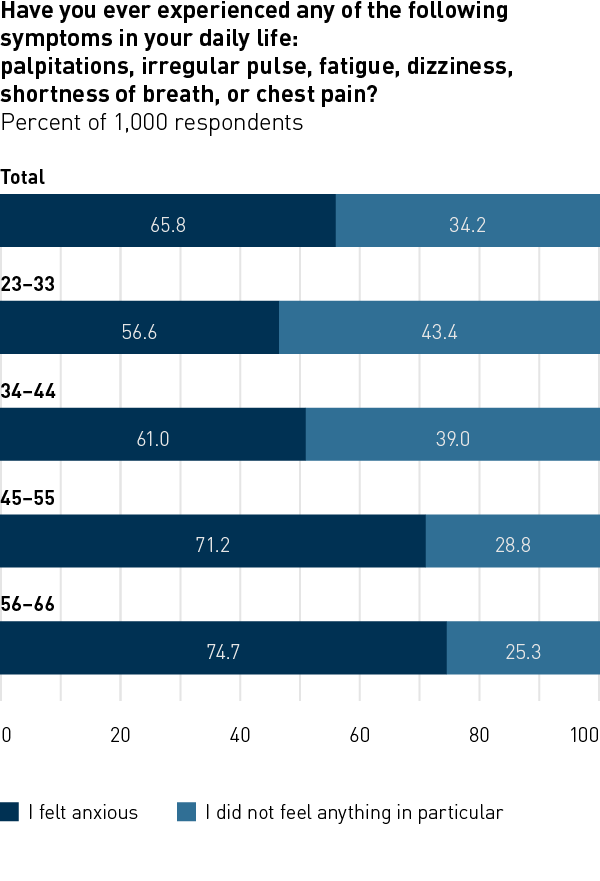
2. 1 in 2 Women Leave Symptoms Unaddressed
When asked how they responded upon experiencing symptoms, 52.7% respondents answered that they “did nothing,” underscoring the reality that many women take no action even when symptoms are present. Among those who did respond, the most common action was “searching for information on the website or social media” (18.1%), followed by “consulting a doctor when visiting a hospital for another reason” (12.0%).
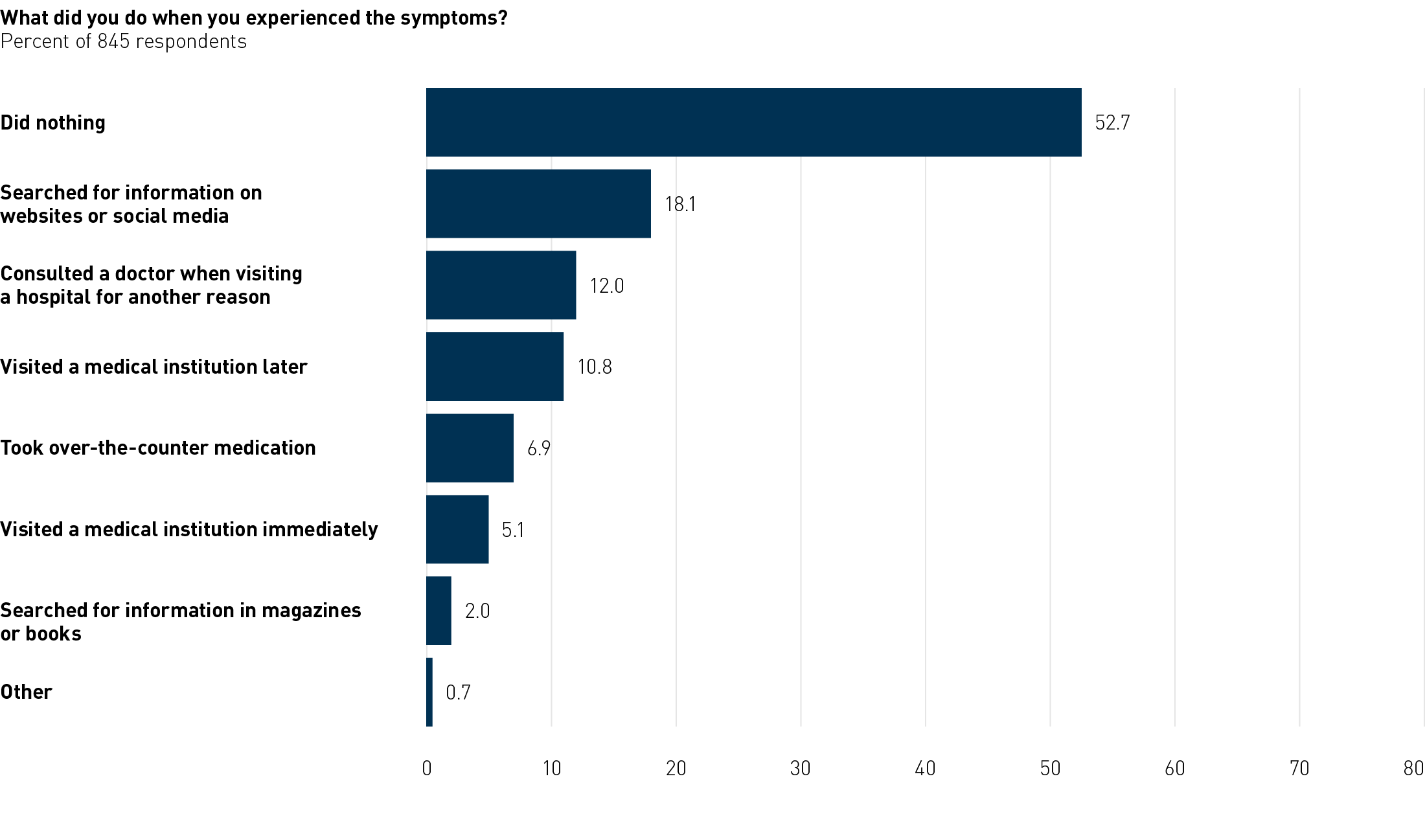
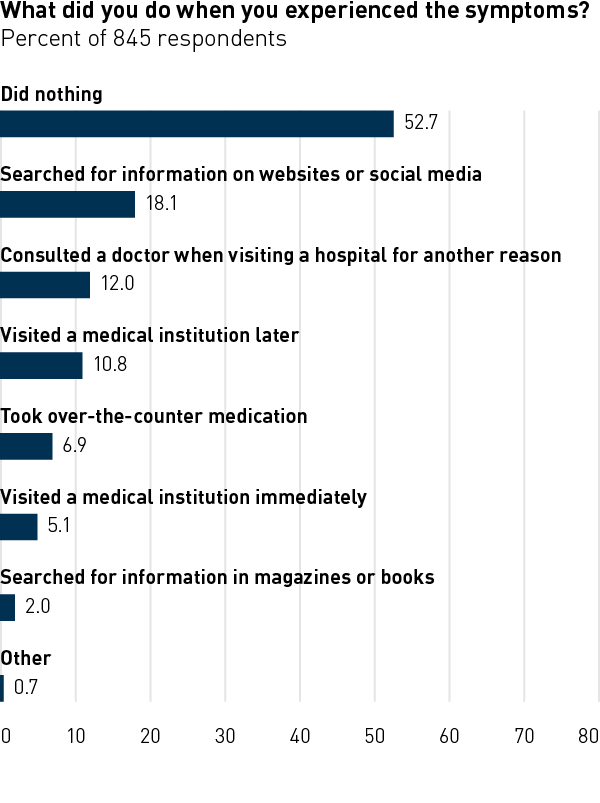
3. Top Reasons for Taking No Action Differ by Generation
When asked why they did not take any action despite experiencing symptoms, the most common response across all age groups was “My symptoms are not serious enough to go to the hospital” (70.8%). The second most common reason differed by generation: among women aged 23–44 it was “I don’t have the time or it’s a hassle” (19.9%), while among women aged 45–66 it was “Because I thought it was due to menopause” (24.0%).
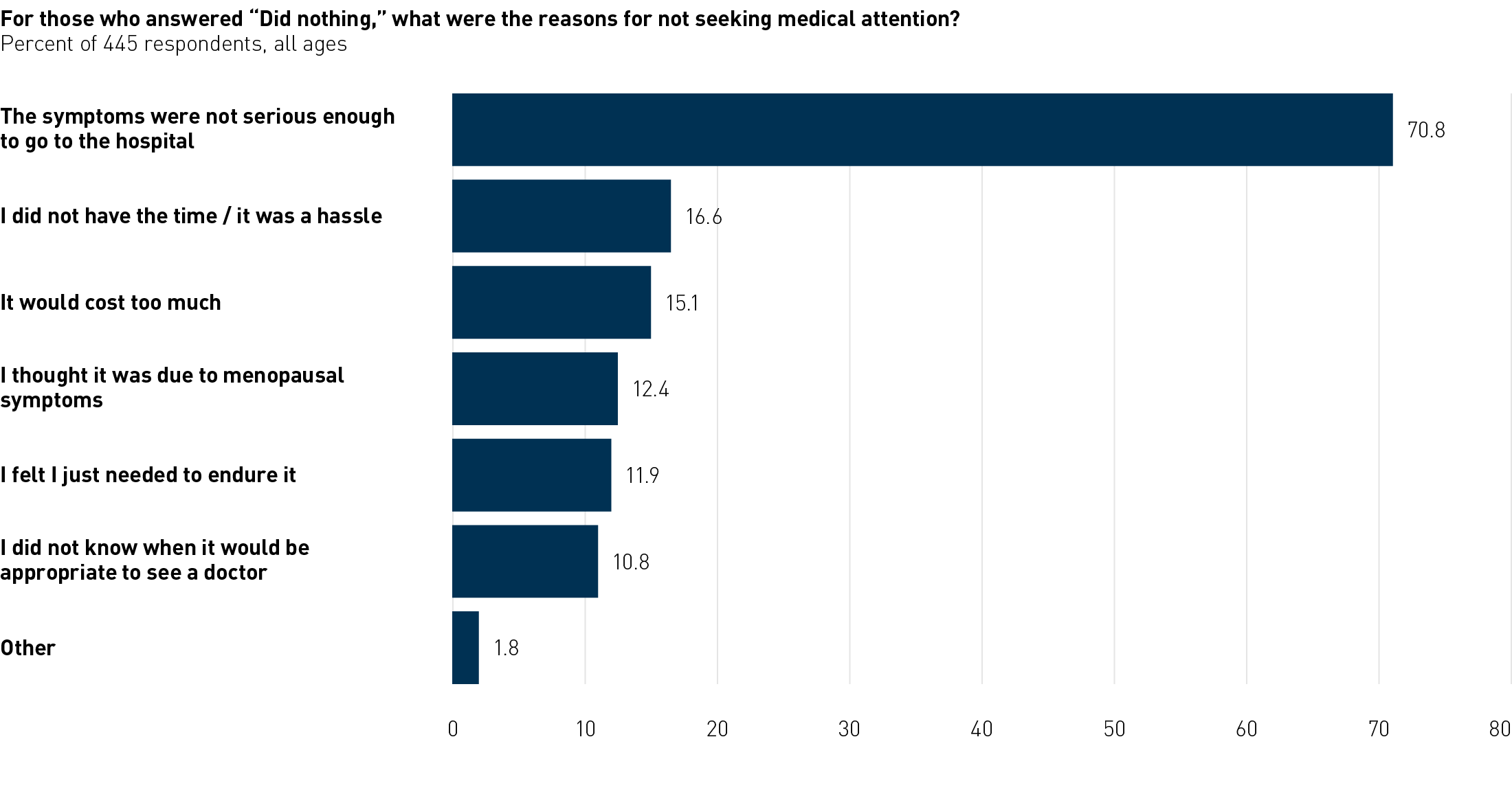

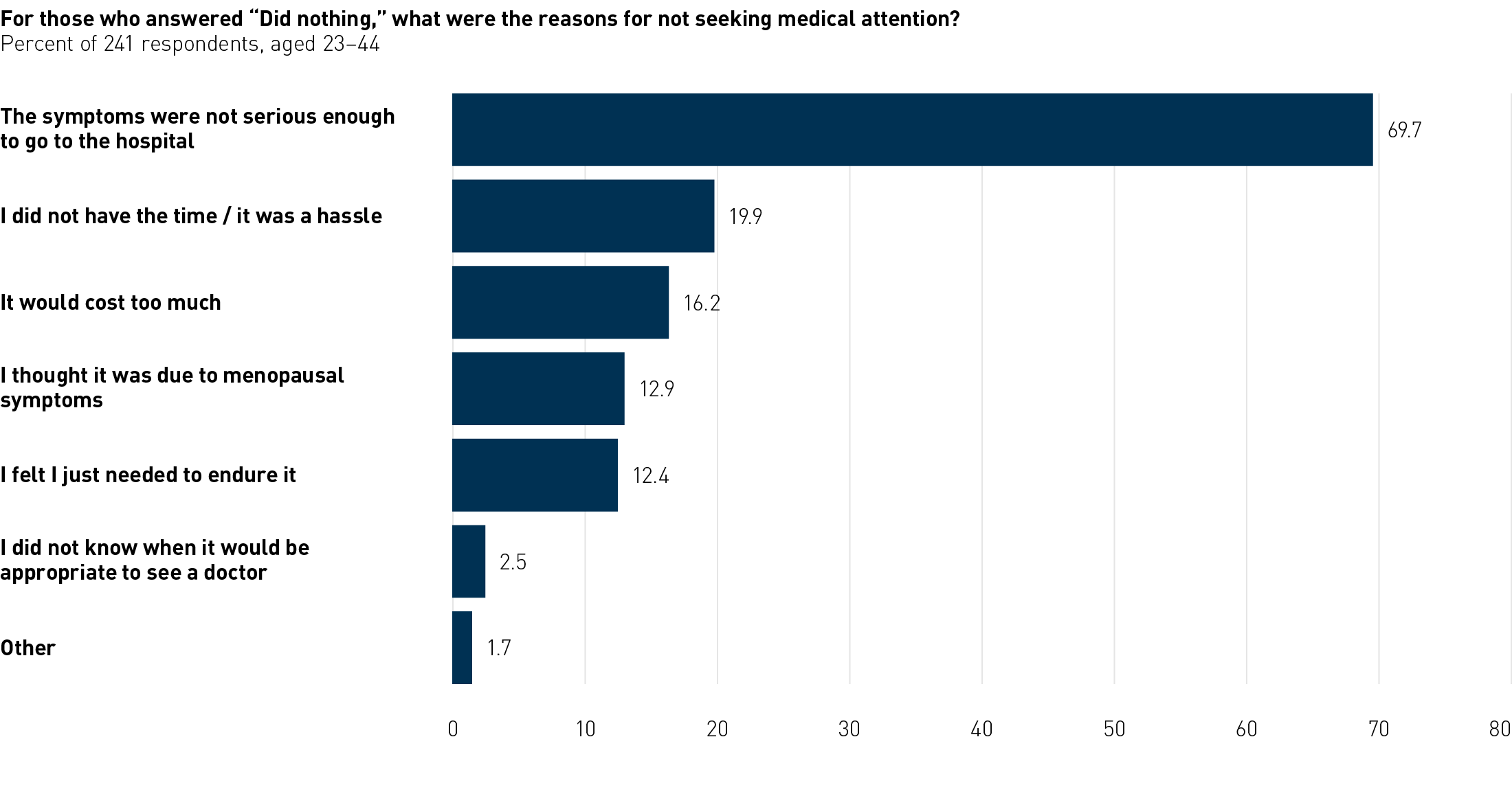
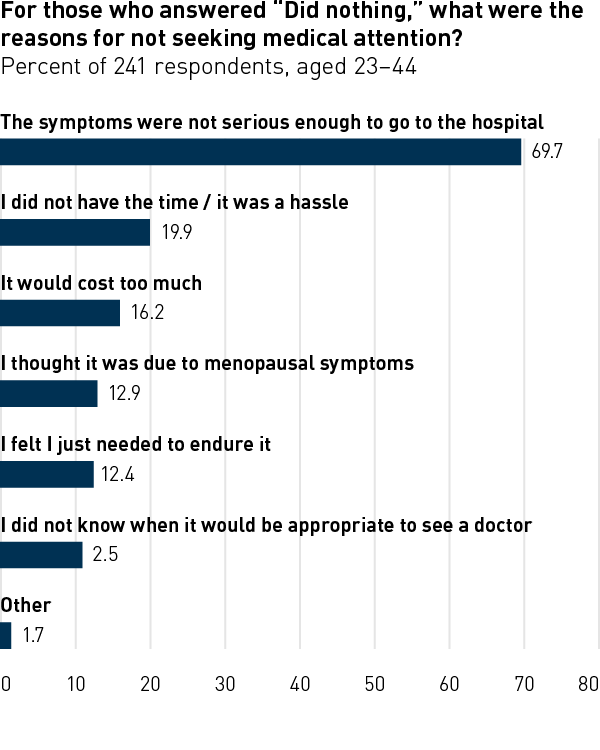
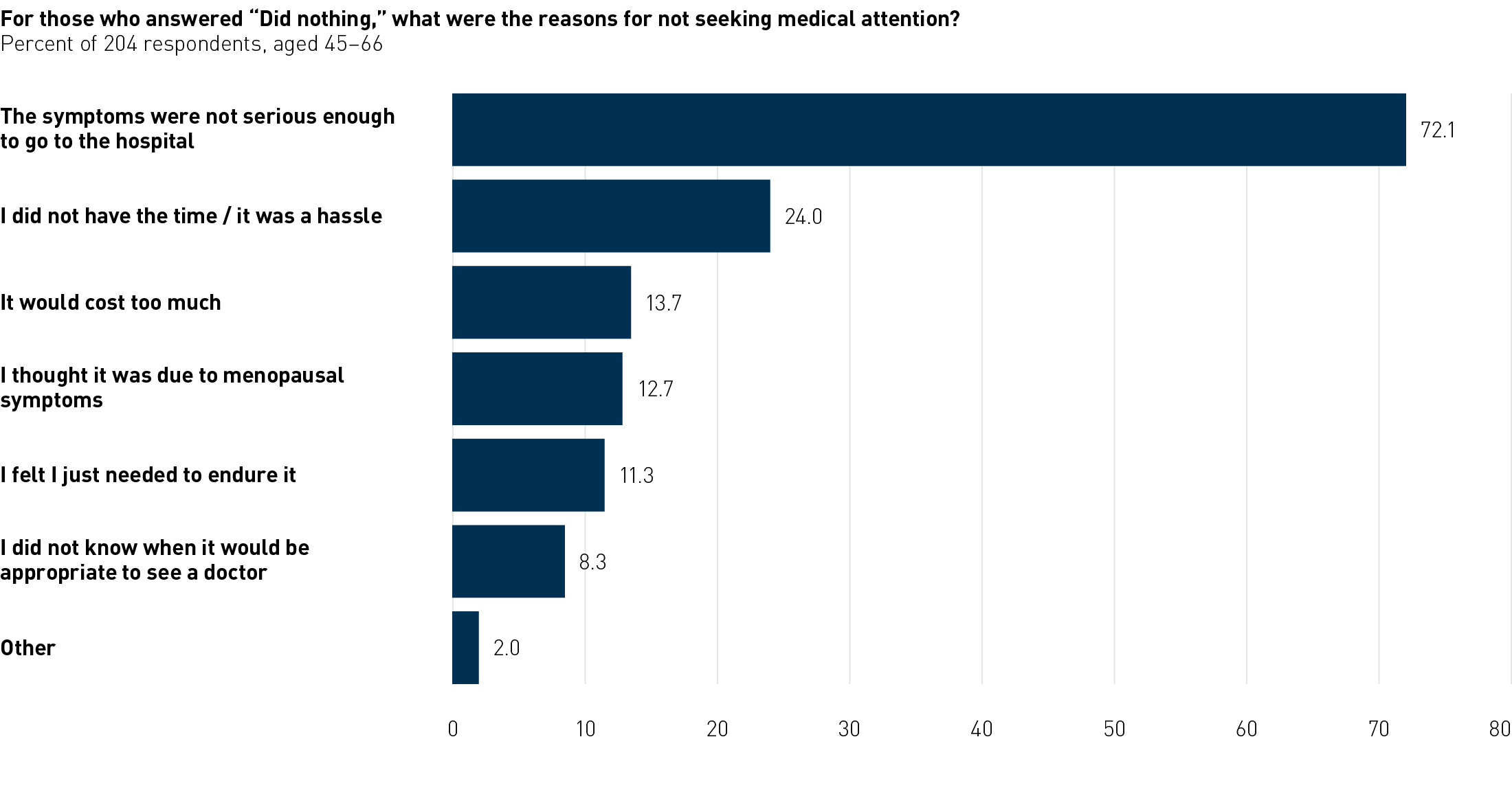
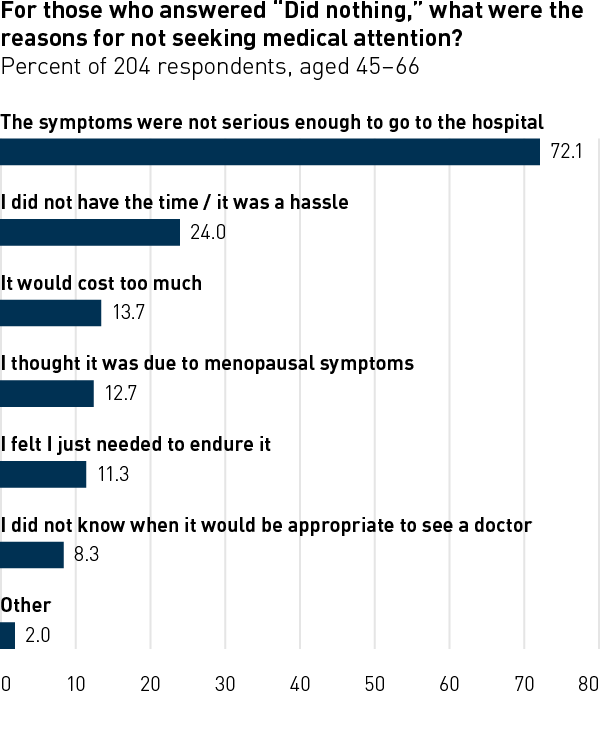
4. Only half of people are aware of AFib, and most don’t understand what it is
52.4% of respondents said they had heard the term “AFib.” However, when asked how much they knew about it, only 37.6% said they could explain it in simple or detailed terms, while 62.4% admitted they did not know what it meant. These results highlight that AFib remains poorly understood among the general public.




5. Even Among Those Aware of AFib, Fewer Than 40% Know It Can Be Treated if Detected Early
Among respondents who had heard of AFib, only 38.2% were aware that AFib increases the risk of cerebral infarction. Similarly, just 31.7% knew that AFib can be treated effectively if detected early. In both cases, awareness remained below 40%.
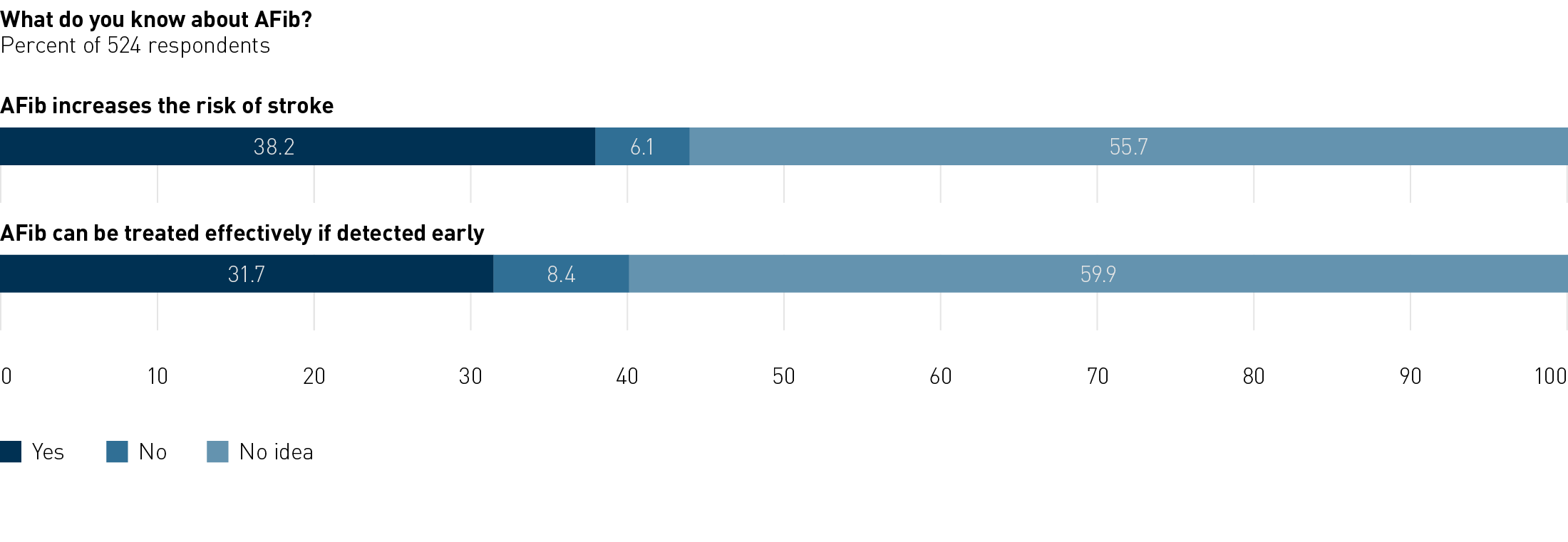
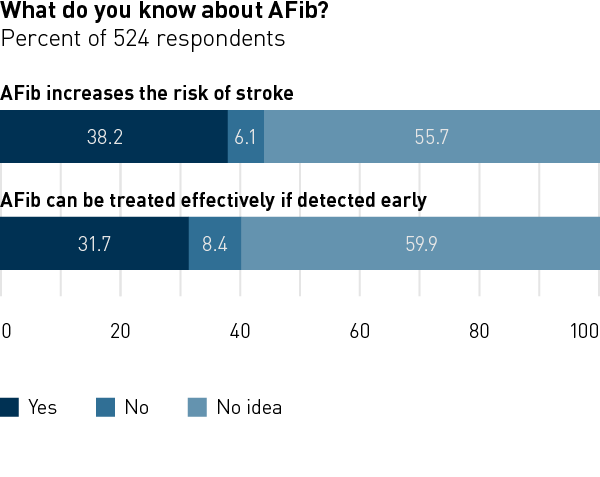
Study Overview
Objective:
Awareness survey of atrial fibrillation
Survey Participants:
Total: 1,000 people
Women aged 23–33: 250
Women aged 34–44: 250
Women aged 45–55: 250
Women aged 56-66: 250
Methodology:
online survey
Period:
July 2 to 8, 2023
Dr. Keitaro Senoo
Associate Professor, Department of Cardiovascular Medicine, Department of Nephrology Graduate School of Medical Science, Kyoto Prefectural University of Medicine
How to Take Your Pulse
Turn your left wrist so that your palm faces upward.
Place your index, middle, and ring fingers along the crease of your wrist, with your ring finger on the crease.
Move your fingers slightly toward the base of your thumb until you feel your pulse on the inside of the bone.
Feel your pulse for about 15 seconds to check if the rhythm is regular. If you notice irregularities, continue for another 1–2 minutes.



